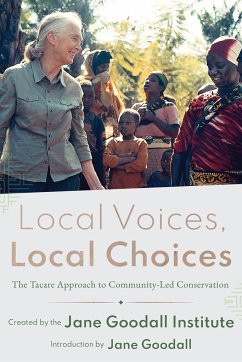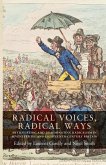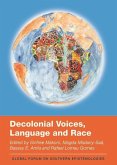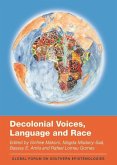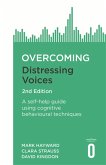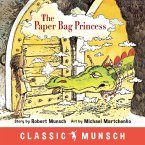Local Voices, Local Choices
The Tacare Approach to Community-Led Conservation
Local Voices, Local Choices
The Tacare Approach to Community-Led Conservation
- Gebundenes Buch
- Merkliste
- Auf die Merkliste
- Bewerten Bewerten
- Teilen
- Produkt teilen
- Produkterinnerung
- Produkterinnerung
Local Voices, Local Choices: The Tacare Approach to Community-Led Conservation chronicles the stories behind Jane Goodallâ s holistic approach to conservation in Africa.
Andere Kunden interessierten sich auch für
![Offshore, Human Voices, The Beginning Of Spring Offshore, Human Voices, The Beginning Of Spring]() Penelope FitzgeraldOffshore, Human Voices, The Beginning Of Spring18,99 €
Penelope FitzgeraldOffshore, Human Voices, The Beginning Of Spring18,99 €![Radical voices, radical ways Radical voices, radical ways]() Radical voices, radical ways43,99 €
Radical voices, radical ways43,99 €![Decolonial Voices, Language and Race Decolonial Voices, Language and Race]() Decolonial Voices, Language and Race72,99 €
Decolonial Voices, Language and Race72,99 €![Decolonial Voices, Language and Race Decolonial Voices, Language and Race]() Decolonial Voices, Language and Race24,99 €
Decolonial Voices, Language and Race24,99 €![Overcoming Distressing Voices, 2nd Edition Overcoming Distressing Voices, 2nd Edition]() Mark HaywardOvercoming Distressing Voices, 2nd Edition16,99 €
Mark HaywardOvercoming Distressing Voices, 2nd Edition16,99 €![The Paper Bag Princess The Paper Bag Princess]() Robert MunschThe Paper Bag Princess7,49 €
Robert MunschThe Paper Bag Princess7,49 €![Choices Choices]() Noah GordonChoices13,99 €
Noah GordonChoices13,99 €-
-
-
Local Voices, Local Choices: The Tacare Approach to Community-Led Conservation chronicles the stories behind Jane Goodallâ s holistic approach to conservation in Africa.
Hinweis: Dieser Artikel kann nur an eine deutsche Lieferadresse ausgeliefert werden.
Hinweis: Dieser Artikel kann nur an eine deutsche Lieferadresse ausgeliefert werden.
Produktdetails
- Produktdetails
- Verlag: ESRI Press
- Seitenzahl: 400
- Erscheinungstermin: 13. Oktober 2022
- Englisch
- Abmessung: 213mm x 147mm x 25mm
- Gewicht: 624g
- ISBN-13: 9781589486461
- ISBN-10: 1589486463
- Artikelnr.: 62919466
- Herstellerkennzeichnung
- Libri GmbH
- Europaallee 1
- 36244 Bad Hersfeld
- gpsr@libri.de
- Verlag: ESRI Press
- Seitenzahl: 400
- Erscheinungstermin: 13. Oktober 2022
- Englisch
- Abmessung: 213mm x 147mm x 25mm
- Gewicht: 624g
- ISBN-13: 9781589486461
- ISBN-10: 1589486463
- Artikelnr.: 62919466
- Herstellerkennzeichnung
- Libri GmbH
- Europaallee 1
- 36244 Bad Hersfeld
- gpsr@libri.de
The Jane Goodall Institute (JGI) is a global, community-centered conservation organization founded in 1977 that advances the vision and work of Dr. Jane Goodall in over 30 countries around the world. We aim to understand and protect chimpanzees, other apes and their habitats, and empower people to be compassionate citizens in order to inspire conservation of the natural world we all share. JGI uses research, collaboration with local communities, best-in-class animal welfare standards, and the innovative use of science and technology to inspire hope and transform it into action for the common good. Through our Roots & Shoots program for young people of all ages, now active in over 50 countries around the world, JGI is creating an informed and compassionate critical mass of people who will help to create a better world for people, other animals and our shared environment.
Foreword by Jack Dangermond
Introduction: The birth of Tacare by Jane Goodall
The Jane Goodall Institute's method of community-led conservation.
1 The human-made island: Mzee Jumanne Kikwale meets Jane Goodall at an
impressionable age. Dr. Anthony Collins arrives to study Gombe's baboons.
2 Paradigms and problems: Mzee Jumanne Kikwale moves back to Kigoma to
teach the next generation about trees. Dr. Anthony Collins recalls Tacare's
earliest steps - and missteps.
3 1994: Understanding deforestation: George Strunden and the genesis of
TACARE.
4 1994: The forester: Mzee Aristides Kashula sees both the forests and the
trees.
5 Cultivating a holistic approach: Mzee Emmanuel Mtiti dances with donors.
6 Creating a common language: Dr. Lilian Pintea uses mapping technologies
to develop a dialogue between communities and conservationists.
7 Local ambassadors: Learning from and speaking for the chimps: Gabo Paulo,
Eslom Mpongo, Hamisi Mkono, Fatuma Kifumu, and Yahaya Almas reflect on
decades of chimp observation at Gombe.
8 A confluence of disciplines: Dr. Shadrack Kamenya explains why indigenous
researchers are essential to outreach efforts. Dr. Deus Mjungu dedicates
his career to creating habitat corridors for endangered wildlife.
9 The cycles of old and new: Japhet Mwanang'ombe educates and inspires the
younger generation. Hamisi Matama preserves the traditional ecological
knowledge his mother taught him.
10 Seeking homeostasis: KANYACODA, VHTs, PFOs, KIKACODA: Working toward
human and ecological health in Uganda.
11 The fatal interface KACODA, Uganda: Finding successful strategies to
reduce human/chimp conflict.
12 From the cloud to the ground: Ugandan Wildlife Authority: Obed Kareebi,
Frank Sarube, and
Philemon Tumwebaze on poverty, technology, and conservation.
13 Outreach through fire: Dario Merlo hears Jane's words of hope as bombs
fall on Goma.
14 The banks and the bees: Phoebe Samwel links microcredit to women's
empowerment Kapeeka Integrated Community Development Association (KICODA)
harvests honey - and venom.
15 Changing the retirement plan: Mama Sonja manages difficult conversations
about choice.
16 Of women champions: Alice Macharia paves the way for African women in
conservation. Yakaka Saweya explains why so many village girls don't
complete their education.
17 The cycle of regeneration: Alice Macharia is in it for the long term -
and the short term.
18 A "talking office" with maps: Joseline Nyangoma, Hoima district natural
resources officer, wants
science to tell a story.
19 People, pixels, and puff adders: Dr. Lilian Pintea contemplates
different ways of knowing.
Conclusion
Introduction: The birth of Tacare by Jane Goodall
The Jane Goodall Institute's method of community-led conservation.
1 The human-made island: Mzee Jumanne Kikwale meets Jane Goodall at an
impressionable age. Dr. Anthony Collins arrives to study Gombe's baboons.
2 Paradigms and problems: Mzee Jumanne Kikwale moves back to Kigoma to
teach the next generation about trees. Dr. Anthony Collins recalls Tacare's
earliest steps - and missteps.
3 1994: Understanding deforestation: George Strunden and the genesis of
TACARE.
4 1994: The forester: Mzee Aristides Kashula sees both the forests and the
trees.
5 Cultivating a holistic approach: Mzee Emmanuel Mtiti dances with donors.
6 Creating a common language: Dr. Lilian Pintea uses mapping technologies
to develop a dialogue between communities and conservationists.
7 Local ambassadors: Learning from and speaking for the chimps: Gabo Paulo,
Eslom Mpongo, Hamisi Mkono, Fatuma Kifumu, and Yahaya Almas reflect on
decades of chimp observation at Gombe.
8 A confluence of disciplines: Dr. Shadrack Kamenya explains why indigenous
researchers are essential to outreach efforts. Dr. Deus Mjungu dedicates
his career to creating habitat corridors for endangered wildlife.
9 The cycles of old and new: Japhet Mwanang'ombe educates and inspires the
younger generation. Hamisi Matama preserves the traditional ecological
knowledge his mother taught him.
10 Seeking homeostasis: KANYACODA, VHTs, PFOs, KIKACODA: Working toward
human and ecological health in Uganda.
11 The fatal interface KACODA, Uganda: Finding successful strategies to
reduce human/chimp conflict.
12 From the cloud to the ground: Ugandan Wildlife Authority: Obed Kareebi,
Frank Sarube, and
Philemon Tumwebaze on poverty, technology, and conservation.
13 Outreach through fire: Dario Merlo hears Jane's words of hope as bombs
fall on Goma.
14 The banks and the bees: Phoebe Samwel links microcredit to women's
empowerment Kapeeka Integrated Community Development Association (KICODA)
harvests honey - and venom.
15 Changing the retirement plan: Mama Sonja manages difficult conversations
about choice.
16 Of women champions: Alice Macharia paves the way for African women in
conservation. Yakaka Saweya explains why so many village girls don't
complete their education.
17 The cycle of regeneration: Alice Macharia is in it for the long term -
and the short term.
18 A "talking office" with maps: Joseline Nyangoma, Hoima district natural
resources officer, wants
science to tell a story.
19 People, pixels, and puff adders: Dr. Lilian Pintea contemplates
different ways of knowing.
Conclusion
Foreword by Jack Dangermond
Introduction: The birth of Tacare by Jane Goodall
The Jane Goodall Institute's method of community-led conservation.
1 The human-made island: Mzee Jumanne Kikwale meets Jane Goodall at an
impressionable age. Dr. Anthony Collins arrives to study Gombe's baboons.
2 Paradigms and problems: Mzee Jumanne Kikwale moves back to Kigoma to
teach the next generation about trees. Dr. Anthony Collins recalls Tacare's
earliest steps - and missteps.
3 1994: Understanding deforestation: George Strunden and the genesis of
TACARE.
4 1994: The forester: Mzee Aristides Kashula sees both the forests and the
trees.
5 Cultivating a holistic approach: Mzee Emmanuel Mtiti dances with donors.
6 Creating a common language: Dr. Lilian Pintea uses mapping technologies
to develop a dialogue between communities and conservationists.
7 Local ambassadors: Learning from and speaking for the chimps: Gabo Paulo,
Eslom Mpongo, Hamisi Mkono, Fatuma Kifumu, and Yahaya Almas reflect on
decades of chimp observation at Gombe.
8 A confluence of disciplines: Dr. Shadrack Kamenya explains why indigenous
researchers are essential to outreach efforts. Dr. Deus Mjungu dedicates
his career to creating habitat corridors for endangered wildlife.
9 The cycles of old and new: Japhet Mwanang'ombe educates and inspires the
younger generation. Hamisi Matama preserves the traditional ecological
knowledge his mother taught him.
10 Seeking homeostasis: KANYACODA, VHTs, PFOs, KIKACODA: Working toward
human and ecological health in Uganda.
11 The fatal interface KACODA, Uganda: Finding successful strategies to
reduce human/chimp conflict.
12 From the cloud to the ground: Ugandan Wildlife Authority: Obed Kareebi,
Frank Sarube, and
Philemon Tumwebaze on poverty, technology, and conservation.
13 Outreach through fire: Dario Merlo hears Jane's words of hope as bombs
fall on Goma.
14 The banks and the bees: Phoebe Samwel links microcredit to women's
empowerment Kapeeka Integrated Community Development Association (KICODA)
harvests honey - and venom.
15 Changing the retirement plan: Mama Sonja manages difficult conversations
about choice.
16 Of women champions: Alice Macharia paves the way for African women in
conservation. Yakaka Saweya explains why so many village girls don't
complete their education.
17 The cycle of regeneration: Alice Macharia is in it for the long term -
and the short term.
18 A "talking office" with maps: Joseline Nyangoma, Hoima district natural
resources officer, wants
science to tell a story.
19 People, pixels, and puff adders: Dr. Lilian Pintea contemplates
different ways of knowing.
Conclusion
Introduction: The birth of Tacare by Jane Goodall
The Jane Goodall Institute's method of community-led conservation.
1 The human-made island: Mzee Jumanne Kikwale meets Jane Goodall at an
impressionable age. Dr. Anthony Collins arrives to study Gombe's baboons.
2 Paradigms and problems: Mzee Jumanne Kikwale moves back to Kigoma to
teach the next generation about trees. Dr. Anthony Collins recalls Tacare's
earliest steps - and missteps.
3 1994: Understanding deforestation: George Strunden and the genesis of
TACARE.
4 1994: The forester: Mzee Aristides Kashula sees both the forests and the
trees.
5 Cultivating a holistic approach: Mzee Emmanuel Mtiti dances with donors.
6 Creating a common language: Dr. Lilian Pintea uses mapping technologies
to develop a dialogue between communities and conservationists.
7 Local ambassadors: Learning from and speaking for the chimps: Gabo Paulo,
Eslom Mpongo, Hamisi Mkono, Fatuma Kifumu, and Yahaya Almas reflect on
decades of chimp observation at Gombe.
8 A confluence of disciplines: Dr. Shadrack Kamenya explains why indigenous
researchers are essential to outreach efforts. Dr. Deus Mjungu dedicates
his career to creating habitat corridors for endangered wildlife.
9 The cycles of old and new: Japhet Mwanang'ombe educates and inspires the
younger generation. Hamisi Matama preserves the traditional ecological
knowledge his mother taught him.
10 Seeking homeostasis: KANYACODA, VHTs, PFOs, KIKACODA: Working toward
human and ecological health in Uganda.
11 The fatal interface KACODA, Uganda: Finding successful strategies to
reduce human/chimp conflict.
12 From the cloud to the ground: Ugandan Wildlife Authority: Obed Kareebi,
Frank Sarube, and
Philemon Tumwebaze on poverty, technology, and conservation.
13 Outreach through fire: Dario Merlo hears Jane's words of hope as bombs
fall on Goma.
14 The banks and the bees: Phoebe Samwel links microcredit to women's
empowerment Kapeeka Integrated Community Development Association (KICODA)
harvests honey - and venom.
15 Changing the retirement plan: Mama Sonja manages difficult conversations
about choice.
16 Of women champions: Alice Macharia paves the way for African women in
conservation. Yakaka Saweya explains why so many village girls don't
complete their education.
17 The cycle of regeneration: Alice Macharia is in it for the long term -
and the short term.
18 A "talking office" with maps: Joseline Nyangoma, Hoima district natural
resources officer, wants
science to tell a story.
19 People, pixels, and puff adders: Dr. Lilian Pintea contemplates
different ways of knowing.
Conclusion

